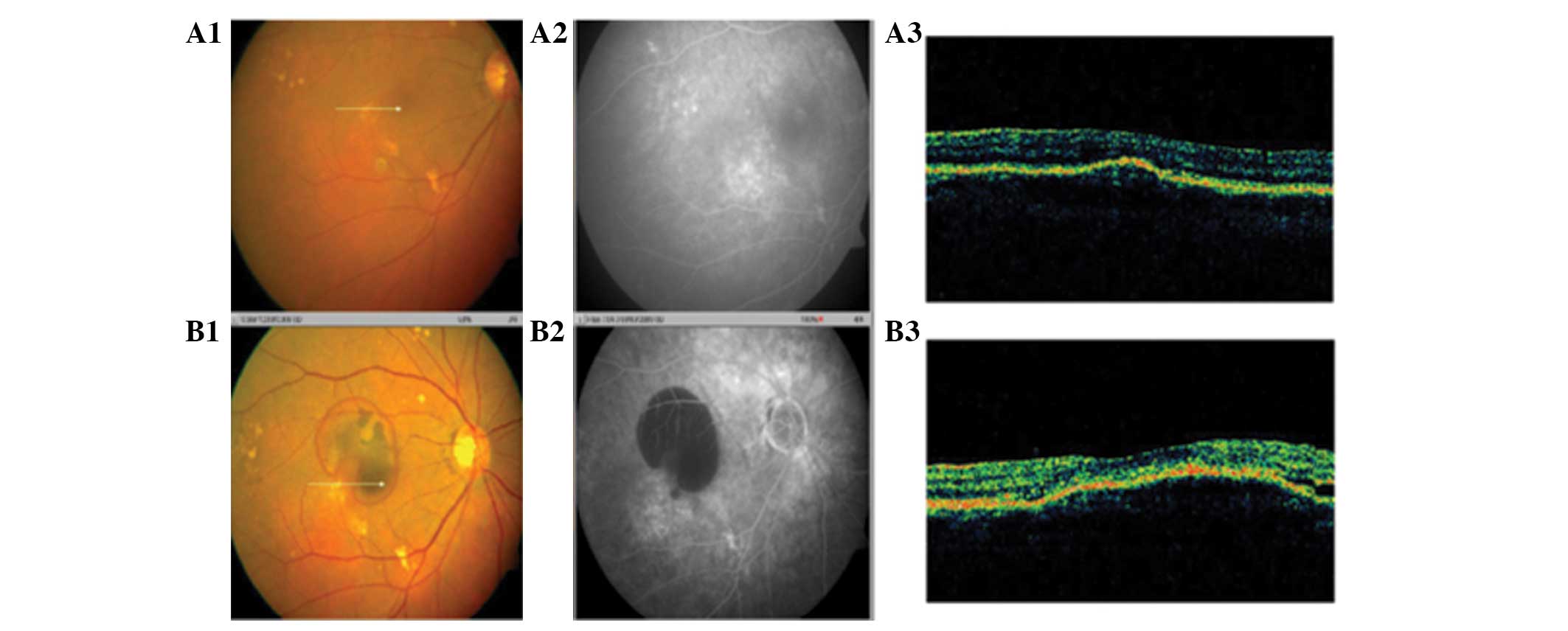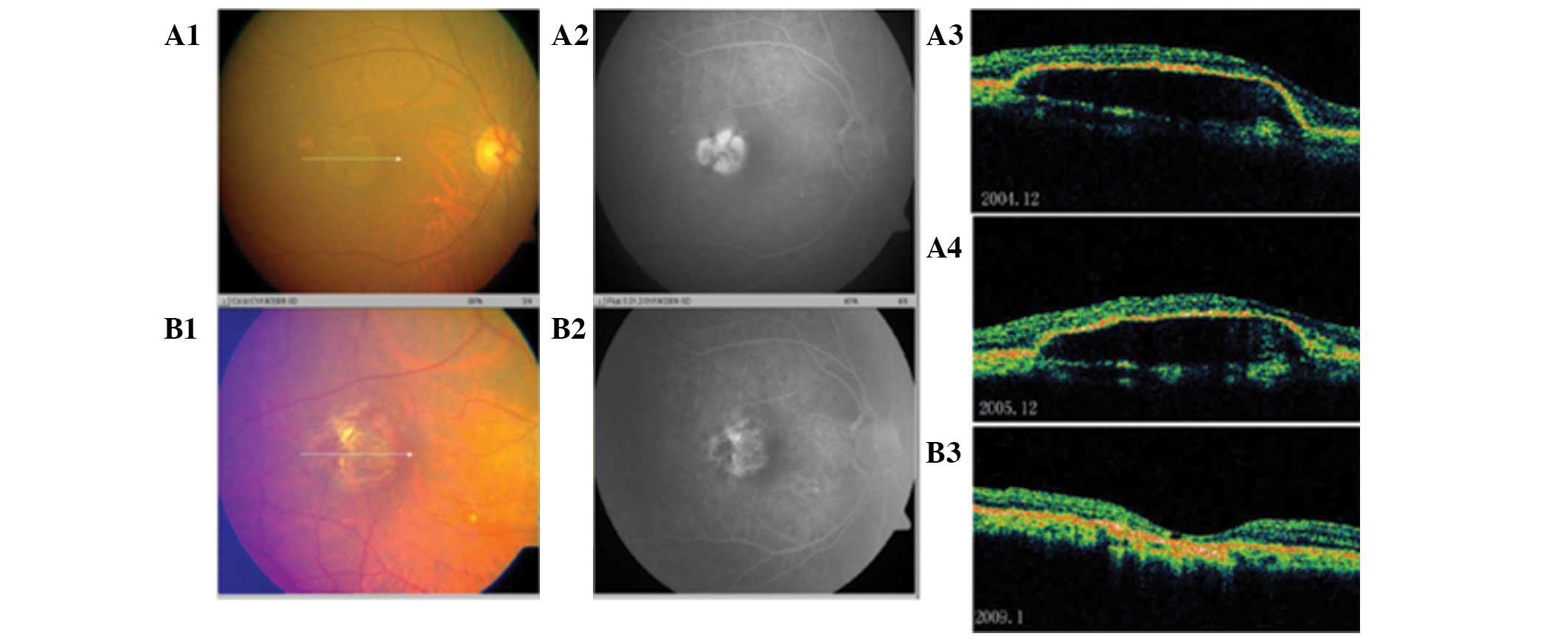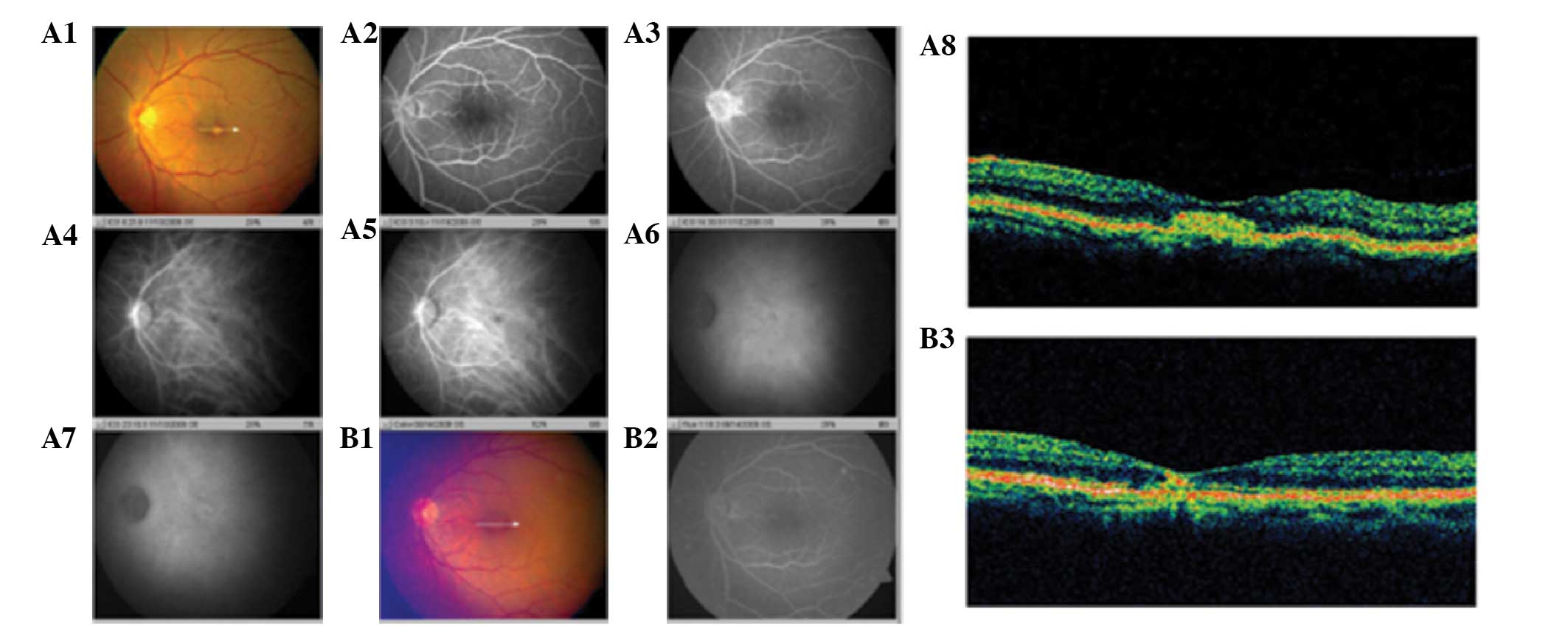A population?based study of macular choroidal neovascularization using optical coherence tomography in Eastern China
- Authors:
- Published online on: May 26, 2014 https://doi.org/10.3892/etm.2014.1731
- Pages: 371-376
Metrics:
Total
Views: 0 (Spandidos Publications: | PMC Statistics:
)
Total PDF Downloads: 0 (Spandidos Publications: | PMC Statistics:
)
Abstract
The aim of the present study was to investigate the pathomorphological and functional variations of choroidal neovascularization (CNV) in age?related macular degeneration (AMD) in a Chinese population using optical coherence tomography (OCT). This population?based study enrolled 59 patients (age, >45 years; eyes, 70) with early and intermediate?stage AMD from Youyi Road Community, Baoshan District, Shanghai, China. Comprehensive standardized ophthalmic examinations included visual acuity, anterior segment analysis using a slit lamp, dilated fundus evaluation by direct ophthalmoscopy, 90D handheld lens analysis, fundus photography, fundus fluorescein angiography (FFA) and fast optic disk scans using OCT. The macular CNV characteristic profiles in early and intermediate?stage AMD were determined by OCT. Data were obtained on the first visit and the follow?up period ranged between 6 and 24 months, where FFA and OCT outcomes of early and intermediate?stage AMD patients were analyzed. Three profiles of early and intermediate?stage AMD were created from the OCT and FFA results, each with a different prognosis. Firstly, drusens with unclear boundaries and evident pigment proliferation, as well as hypofluorescence around the drusens, was observed via FFA. A slight small arch field located in the retinal pigment epithelium (RPE)/choriocapillary layer (CCL) was shown on OCT scans, indicating exudative AMD. Secondly, RPE detachments of >1 pupillary distance, without CNV in the macular area, indicated geographic chorioretinitis atrophy. Finally, drusens with clear boundaries and few pigment proliferations and no certain surrounding fluorescence was observed via FFA, while a clear RPE/CCL band on the OCT scans indicated slow progress. The results of the present study demonstrated that combined OCT and FFA was the most efficient method for identifying CNV and diagnosing AMD. If the two techniques are not available concurrently, then OCT is a safer and more reliable technique to follow?up early and intermediate?stage AMD patients.














